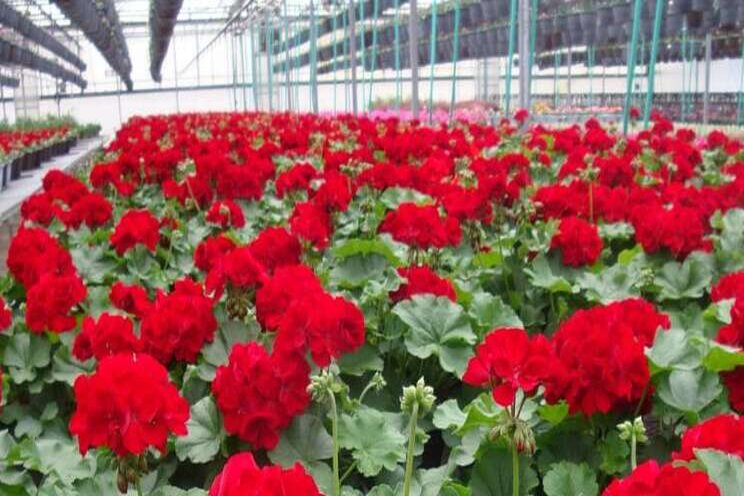Maximizing photosynthesis, minimizing respiration
Added on 15 March 2021

What many people forget is the process of respiration, which is essentially the opposite of photosynthesis. Respiration is the conversion of sugars and oxygen into CO2, water and energy used by cells. This process is required to maintain the functions of plants and, in contrast to photosynthesis, operates during the day and night.
Therefore, plant growth is largely a function of the gain of sugars from photosynthesis and the use of those sugars by respiration. Conceptually, anything growers can do to increase photosynthesis and decrease respiration can increase growth, leading to thicker stems, faster rooting, more branches, and more and larger flowers and fruits (Figure 1). Let's look at these factors to understand how a change in the growing environment or plant culture can influence these two essential plant processes.
Light. Photosynthetically active radiation, which refers to photons with wavelengths between 400 and 700 nm, is usually the greatest limiting factor for photosynthesis of plants grown in controlled environments. For many plants, for every 10% increase in light, there is a 7 to 10% increase in growth. To increase the light available to plants in a meaningful manner, supplemental lighting needs to deliver at least 60-100 ?molˇm-2ˇs-1 for floriculture crops and operate 12 to 20 hours per day. Even higher intensities can be justified for some fruit and vegetable crops.
Carbon dioxide. Despite being one of the two building blocks for photosynthesis, CO2 is an often overlooked growing parameter in greenhouse crop production. Today, the CO2 concentration outside is around 415 ppm. Enriching the greenhouse air to 800- to 1,000-ppm CO2 increases photosynthesis and thus growth, especially when light is not a significantly limiting factor. Perhaps more importantly though, a CO2 deficiency slows down photosynthesis and limits growth. A CO2 deficiency can occur when a greenhouse is full of plants, there is little to no venting, and light levels are moderate or high. When these conditions occur, bringing in air from the outside (even when it is cold) is advised to replenish the CO2.
Water. The second building block of sugars is water, so photosynthesis decreases when water is a limiting factor. Withholding water is an effective way to inhibit extension growth and makes plants more compact, but it also usually leads to smaller leaves and less shoot growth. The question is, do the benefits of water stress outweigh the negative effects of decreased photosynthesis and thus, plant growth? Certainly the answer will depend on the crop.
Temperature. The day and night temperature influence a number of plant processes, including rates of photosynthesis and respiration, as well as plant development and height. A high day temperature can increase photosynthesis, especially when light and CO2 are not limiting. However, respiration also increases with temperature because plants need more energy to support the increased rate of cell division and expansion. When the temperature is high but photosynthesis is limited, plants continue to develop but have fewer sugars to support growth. This usually leads to thin stems, little branching, slow rooting, and few and small flowers.
One way to counter a decrease in plant quality from low light levels is to slow down respiration by decreasing the temperature. This strategy is especially effective at night, so that respiration is slowed down but photosynthesis is not. A warmer day than night temperature creates a +DIF, which promotes stem elongation in many crops, so additional height control strategies may be needed. Despite this, a warmer day than night can lead to greater plant growth.
Nutrients. Plants require many macro- and micro-nutrients for sufficient growth, and some of them are especially important in photosynthesis. Just like water, limiting some of them (such as phosphorus) can inhibit extension growth. However, a nutrient deficiency also slows down photosynthesis. Do the benefits of limited nutrition outweigh the consequences of reduced growth?
Oxygen. We often don't think of oxygen as being a limitation to plant growth, but it can limit respiration of the roots. This is why porosity is an important characteristic of a rooting substrate, and why a hydroponics solution needs to be aerated. Since roots do not photosynthesize, they respire some of the sugars generated by photosynthesis to maintain the existing root system, take up nutrients, and support new root growth. Insufficient oxygen in the root zone will decrease respiration, which slows down the functioning of roots.
PDF: Maximizing Photosynthesis, Minimizing Respiration
Source and Photo Courtesy of Greenhouse Product News
Source: Greenhouse Product News
More news















